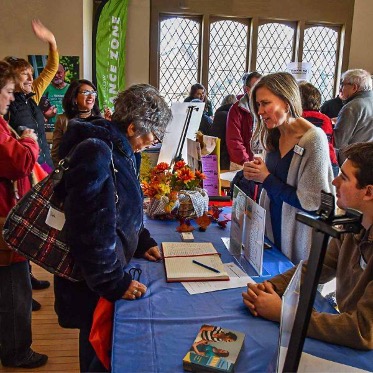DLE VOLUNTEERS POWER PROGRAMS WITH SUBSTANCE
October 18, 2023DLE BUILDS FUTURE LEADERS WITH CHALLENGING INTERNSHIPS
October 18, 2023By Alaina Stanisci, DLE Communications Intern, Sophomore at Fordham University, Bronx, NY
Our world faces many dire issues: climate change, poverty, access to healthcare and world hunger, to name a few. However, there is a significant disconnect between these pressing issues and people willing to volunteer their time to make meaningful changes. The bottom line is that simply not enough people are volunteering.
Despite this apparent deficiency in volunteering, a viable solution exists. By providing individuals with comprehensive information on how to initiate involvement in volunteering since 2008, the DLE has created countless opportunities for community members to commit their time to meaningful causes.
Longtime DLE supporter Liana Toscanini, who has served as the Executive Director of Nonprofit Centers of the Berkshires for eight years, highlighted the personal and professional benefits of volunteering during a recent interview with The HUB. She reviewed five strategic steps for getting involved with an organization.
“The first step is to assess your interests and concerns,” she notes. For instance, you might love animals, be concerned about the environment, or be interested in the arts. Drawing from personal experiences or challenges can also help refine these interests to discover how you can help in those fields.
After you consider your interests and discover your passions, Liana recommends a simple Google search to narrow down organizations in your region that align with those passions and interests. Subsequently, the next step involves identifying a few different organizations, exploring their websites or reviewing articles about them, and selecting one or two nonprofits that resonate with your assessments.
“Once you have identified the organizations you are interested in, seek advice from friends or coworkers to learn where they volunteer and ask if they are familiar with the organizations you identified,” she continues. The final step in the investigative process entails reaching out to the organizations, specifically to the person in charge of volunteers, to discuss their needs and offer your time for a meeting.
It can be challenging to determine whether the organization you are volunteering for is right for you. Liana notes, “Volunteering should be rewarding, but not necessarily easy. You should enjoy the people you meet, feel joy in the mission and organization’s work, and take pride in what they do and how you are helping. Conversely, if you experience frustration with the organization or have more than one bad experience, it may not be the right fit for you.”
Certain characteristics align with strong volunteers. According to Liana, top volunteers are “team players, keep their commitments, show up and on time, and are willing to roll up their sleeves.” More specifically, the best volunteers are consistently willing to help, especially for tasks they may not enjoy, like selling program advertising or cleaning up after an event. Many volunteers eventually transition into becoming donors.
With the holiday season approaching, volunteer opportunities are abundant with toy collections, food pantries, and shelter support. However, Liana points out the backside of the holiday season escalates the need for helpers. January traditionally is a down period for volunteer engagement as many people tend to hibernate.
Ultimately, individuals volunteer for different reasons, such as social interaction, paying it forward, and feeling useful. Regardless of one’s motivations, the need for support is critical. The action is immensely rewarding. Concludes Liana, “By leveraging our motivations and identifying meaningful causes we are passionate about, we can all make a difference and give back to our communities.”



